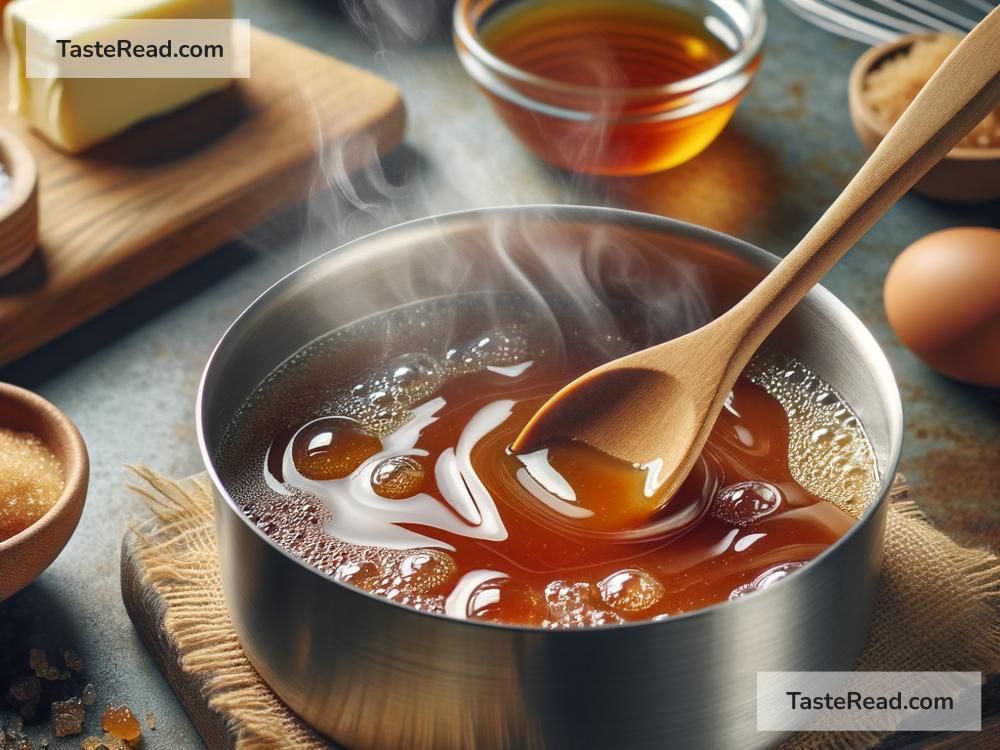The Science of Cooking with Sugar: Techniques and Tips
Sugar is one of the most common ingredients in cooking and baking. Whether you’re making a sweet dessert or adding a hint of sweetness to a savory dish, sugar plays an important role. But it’s not just about making things taste good. Sugar also works magic with texture, color, and chemistry, helping recipes come to life. In this article, we’ll explore the science behind cooking with sugar and share simple techniques and tips to help you make the most of this versatile ingredient.
Why Is Sugar So Special?
Sugar isn’t just sweet—it’s a hardworking team player. Its unique properties affect the taste, texture, and appearance of food. Here’s why sugar matters:
-
Sweetness: Yes, sugar makes things deliciously sweet. But it also balances acidity in foods like tomato sauces or citrus-based recipes. A small amount can improve flavor without making a dish overly sugary.
-
Texture: Sugar can change the texture of food. For example, it helps baked goods stay moist and soft. In ice cream, sugar lowers the freezing point, ensuring a creamy texture instead of icy chunks.
-
Color: Have you ever noticed the golden crust on a cake or caramelized onions? That’s sugar! When sugar is heated, it undergoes a process called caramelization, creating rich, tasty browning.
-
Preservation: Sugar is a natural preservative. That’s why jams and jellies use sugar to prevent spoilage. It keeps bacteria from growing and helps the flavors stay fresh.
The Chemistry of Sugar in Cooking
Sugar is more than a sprinkle of crystals—it’s a science experiment waiting to happen. Here are two key chemical processes to understand:
-
Caramelization: When you heat sugar to high temperatures (around 320°F/160°C), it melts and turns golden brown. This process breaks the sugar molecules down, creating new compounds with deep flavors. Caramelization is what gives caramel, crème brûlée, and roasted vegetables their rich, nutty taste.
-
Maillard Reaction: Sugar works together with proteins in food during the Maillard reaction, causing browning and creating complex flavors. For example, the golden crust on a loaf of bread or the seared edges of meat often results from sugar interacting with protein.
Types of Sugar and Their Uses
Sugar isn’t just one thing—it comes in many forms, each with unique properties. Here are some common types of sugar and how they’re used:
-
Granulated Sugar: This is your everyday white sugar. It’s great for baking and adding sweetness to coffee or tea. Use it in recipes where sugar needs to dissolve easily.
-
Brown Sugar: Brown sugar has molasses, giving it a rich, caramel-like flavor. It’s perfect for cookies, barbecue sauces, and baked goods that need extra moisture.
-
Powdered Sugar: Also called confectioners’ sugar, this fine sugar is ideal for decorating cakes or making smooth icings.
-
Honey and Syrups: While not technically sugar, sweeteners like honey, maple syrup, and agave syrup act similarly. They add moisture and unique flavors to recipes.
-
Raw Sugar and Specialty Sugars: Turbinado, coconut sugar, and similar types offer mild molasses flavors and are often used in baking.
Techniques for Cooking with Sugar
Learning how to use sugar properly can take your cooking and baking to the next level. Here are some helpful techniques:
-
Caramelizing Sugar: To make caramel, heat sugar slowly in a dry pan or with water. Stir gently until it melts and turns amber. Remember: caramel can burn quickly, so keep an eye on it!
-
Creaming Butter and Sugar: In baking, the creaming method involves beating sugar and butter together until fluffy. This creates air pockets that help cakes and cookies rise.
-
Whipping Sugar into Egg Whites: For meringue, add sugar gradually to whipped egg whites. The sugar helps stabilize the foam, creating glossy peaks.
-
Cooking Sugar Syrups: Sugar syrups are used in candy-making, cocktails, and glazes. Heat sugar and water together, using a thermometer to hit specific temperatures (like the “soft ball stage” for fudge or the “hard crack stage” for brittle).
-
Balancing Flavors: Sugar isn’t just for sweet foods. Adding sugar to savory dishes, like stews, marinades, or tomato sauces, can balance out acidity or bitterness.
Tips for Cooking with Sugar
Want to level up your sugar skills? Here are some tips:
-
Measure Carefully: Sugar plays a critical role in recipes. Use the exact amount called for to keep textures and flavors spot on.
-
Use Heat Wisely: Sugar loves heat, but it can also burn quickly. Work carefully when caramelizing or making syrups.
-
Experiment with Types of Sugar: Don’t be afraid to try new kinds of sugar in recipes. Brown sugar, honey, or coconut sugar can add unique flavors.
-
Store Sugar Properly: Keep sugar in a dry, airtight container to avoid clumping or hardening.
-
Clean Up Smart: Sugar can get sticky, especially when melted. Use warm water to soak pots and pans for easy cleanup.
Conclusion: Sugar, the Sweet Science
Cooking with sugar is both art and science. It sweetens our foods, creates beautiful textures, and adds unforgettable flavors. By understanding its chemistry and mastering simple techniques, you can use sugar to craft amazing dishes. Whether you’re baking cookies, caramelizing onions, or making a silky glaze, sugar plays a vital role.
So, the next time you reach for sugar in your kitchen, think about the magic happening on a molecular level—and enjoy the sweetness it brings to your food!


